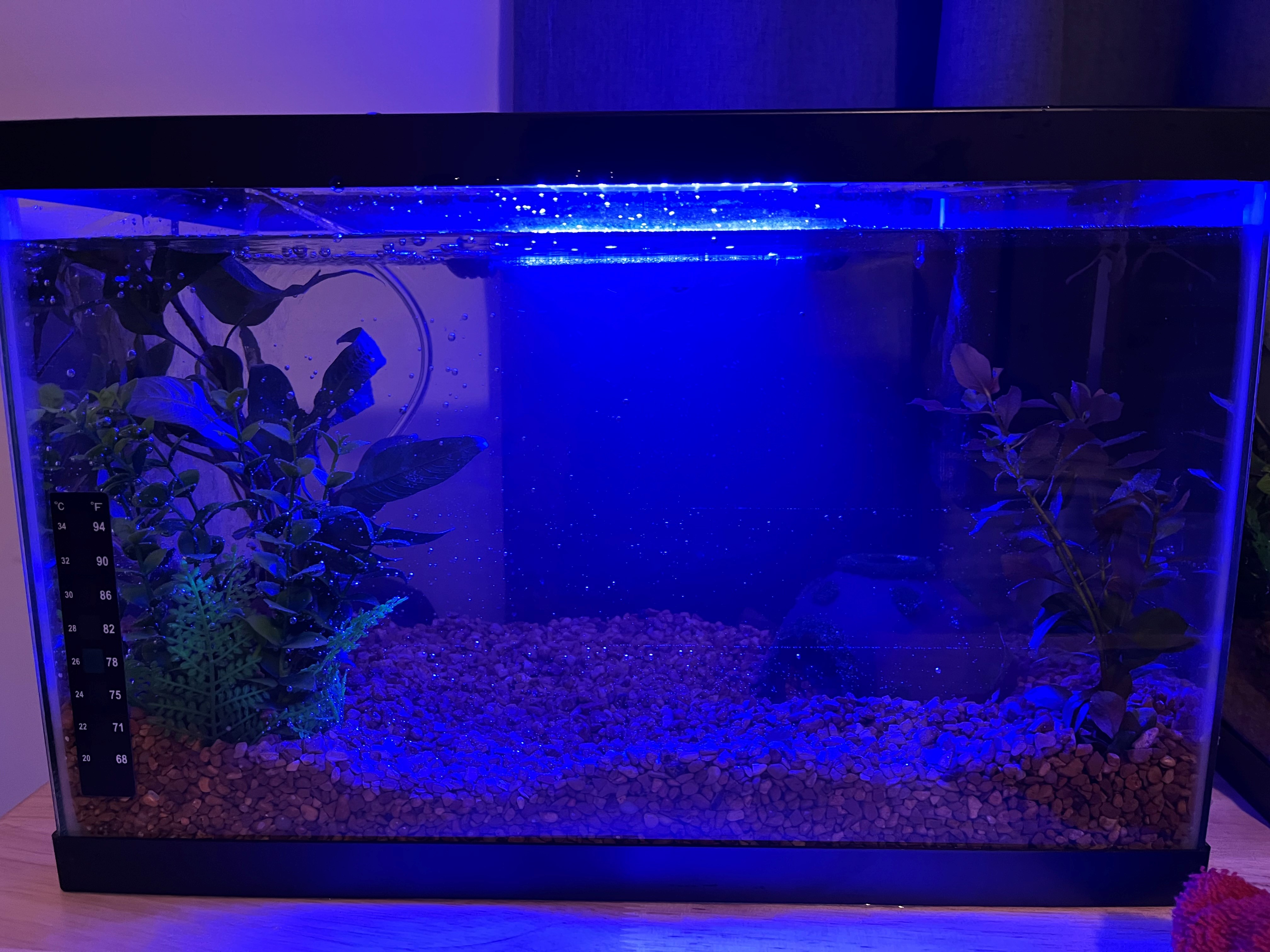What tank size should you get? There are a few things to take into consideration when picking out your tank size. While Betta fish can live in an absolute bare minimum of 2.5 gallons, a minimum of 5 gallons is more agreed upon by fish keepers. However, smaller tanks are actually harder to maintain, so a good bigger size could be around 10 gallons.
First and foremost, when setting up a tank for your betta, there are several necessities:
- Filter
- Heater (aqueon recommended)
- Air bubbler (air stone, airline tubing, check control valve, and an air pump)
- Live plants (broad leaf anubis makes a great betta buddy)
- Lots of hiding spots
- Substrate (sand, gravel, etc.)
- A cycle
Very basic example of a tank setup

Possible Improvements to this Setup:
- More plants
- More hiding spots
Considerations
Decor:
Betta fish have very delicate fins, and thus any decorations in the tank need to be free of sharp edges whatsoever. It can be difficult to find decor with zero snag spots, so keeping your tank mostly full of rocks, driftwood, and live plants can be a good way to go.
Hiding spots
As a new fish owner, you may feel anxious if you peek into your tank and are unable to see your betta right away, but it is important for them to be able to hide in the tank. Privacy is important for betta fish to feel safe! Many things can provide hiding spots, like thick patches of plants, large rocks, or safe decor
Preparing your water:
When preparing your water, you need to use a water conditioner. The conditioner makes tap water safe for a fish to live in. It takes about 24 hours for your water to be conditioned, but you’re not done yet. You still need to start the nitrogen cycle.
What is the nitrogen cycle?
The nitrogen cycle is vital to your tank’s health. Your tank needs 30 days (or more, depending on tank size) to cycle before it is safe for fish. The goal of cycling is to develop beneficial bacteria and nitrate levels.
Follow these steps:
- Set up your tank as usual, without the fish. Set up your heater, filter, plants, decor, and airstone. Beneficial bacteria live on surfaces like tank walls and decor, not in water.
- The cycle is started by adding ammonia to your tank. This is achieved by adding a pinch of food to your tank each day, as if you were feeding a fish inside it. The beneficial bacteria feeds on ammonia. After a cycle is established, your beneficial bacteria will get this ammonia from fish waste and excess food. It will eat your ammonia to keep ammonia levels low and safe.
- Test your water weekly or a couple of times a week. You will notice…
- Week 1: Ammonia will spike. Week 2: Nitrites will spike. Week 3: Ammonia and Nitrites go down some, Nitrates are now detectable. Week 4: Ammonia and Nitrites should be 0ppm. Nitrates should be about 10-20ppm.
- Don’t do water changes during cycling, unless your ammonia spikes high enough to kill the beneficial bacteria accumulating in your tank (above 5ppm).
- Once your perimeters are at what was mentioned in Step 4, you’re all set! This may take a little more or less than 30 days, so don’t worry if your cycle is complete by day 27 or isn’t complete until day 34.
- Float your Betta in the tank in the container they came in for 20-30 minutes.
- Every few minutes, replace a small amount of water in the container (about a tablespoon) with tank water.
- After 20-30 minutes, gently submerge your container and let your betta swim out.
Adding your Betta
Don't add your Betta to the tank straight away, even after the tank is cycled! Your Betta needs about 20-30 minutes to get used to the temperature and conditions of the tank water.